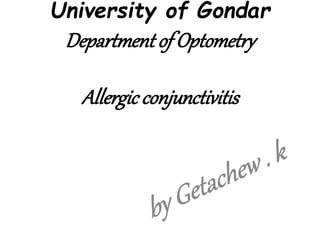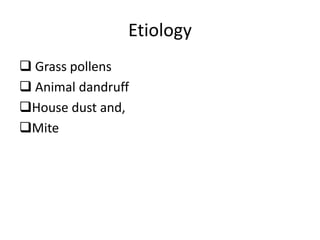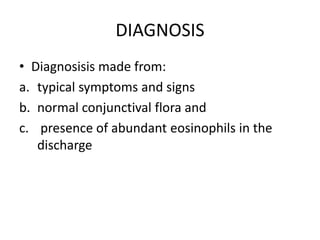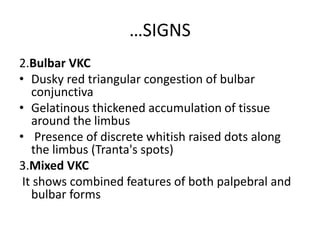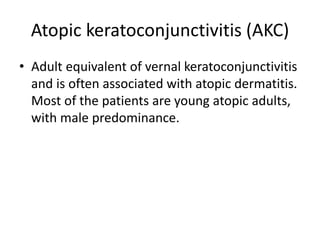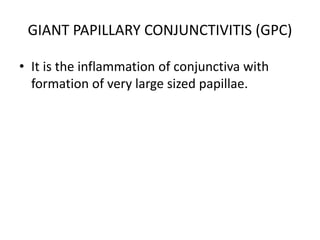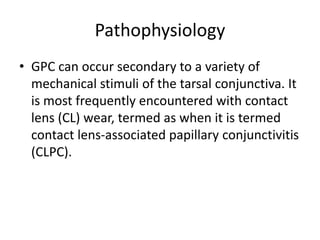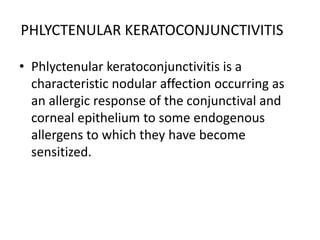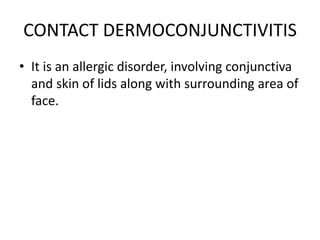The document provides an overview of allergic conjunctivitis, detailing its types, etiology, pathophysiology, clinical features, diagnosis, and management strategies. It covers various forms such as simple allergic conjunctivitis, vernal keratoconjunctivitis, atopic keratoconjunctivitis, and others, along with their symptoms and treatment options, including antihistamines, mast cell stabilizers, and corticosteroids. The management focuses on avoiding allergens and pharmacological treatments to alleviate symptoms.
